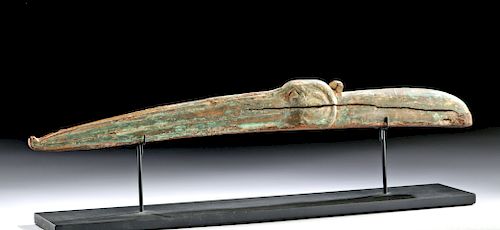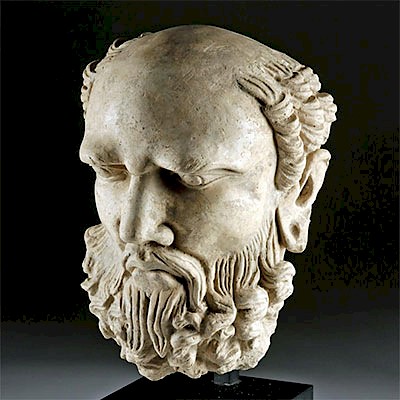Dramatic Egyptian Gesso'd Wood Ibis Head
Lot 15
About Seller
Artemis Fine Arts
686 S Taylor Ave, Ste 106
Louisville, CO 80027
United States
Selling antiquities, ancient and ethnographic art online since 1993, Artemis Gallery specializes in Classical Antiquities (Egyptian, Greek, Roman, Near Eastern), Asian, Pre-Columbian, African / Tribal / Oceanographic art. Our extensive inventory includes pottery, stone, metal, wood, glass and textil...Read more
Categories
Estimate:
$2,400 - $3,600
Absentee vs Live bid
Two ways to bid:
- Leave a max absentee bid and the platform will bid on your behalf up to your maximum bid during the live auction.
- Bid live during the auction and your bids will be submitted real-time to the auctioneer.
Bid Increments
| Price | Bid Increment |
|---|---|
| $0 | $25 |
| $300 | $50 |
| $1,000 | $100 |
| $2,000 | $250 |
| $5,000 | $500 |
| $10,000 | $1,000 |
| $20,000 | $2,500 |
| $50,000 | $5,000 |
| $100,000 | $10,000 |
| $200,000 | $20,000 |
About Auction
By Artemis Fine Arts
Jan 16, 2020
Set Reminder
2020-01-16 10:00:00
2020-01-16 10:00:00
America/New_York
Bidsquare
Bidsquare : Ancient | Asian | Ethnographic
https://www.bidsquare.com/auctions/artemis-gallery/ancient-asian-ethnographic-4799
Featuring classical antiquities, ancient and ethnographic art from cultures encompassing the globe. Artemis Fine Arts info@artemisfinearts.com
Featuring classical antiquities, ancient and ethnographic art from cultures encompassing the globe. Artemis Fine Arts info@artemisfinearts.com
- Lot Description
Ancient Egypt, Third Intermediate to Late Dynastic Period, ca. 1070 to 332 BCE. A dramatic, playful head of an ibis, carved with a dramatically long beak, a large eye, incised curves behind the eye giving the impression of a swirl of feathers, and a long, straight tab for insertion into a body. Ibis figures - consisting of separately carved heads and legs attached to hollow wooden bodies were used by the Egyptians to hold the mummified remains of ibises who were linked to Toth, the god of wisdom and writing. This example is decorated with gesso, and the remains of original pigmentation - pale green and gilt - are still visible in many places on the surface. Size: 15.4" W x 1.5" H (39.1 cm x 3.8 cm); 4.45" H (11.3 cm) on included custom stand.
The ibis, an elegant, long-legged wading bird that lives along the shores of the Nile, was associated with the god Thoth. He was the god of wisdom and writing, and in worship to him many thousands of ibises were ritually sacrificed, embalmed, and mummified before being buried in underground galleries. Thousands of these burials have been excavated at Saqqara, near Memphis, Egypt's ancient capital.
Provenance: private J.H. collection, Beaverton, Oregon, USA, acquired in 2017; ex-Relics of the Nile / Mike Sigler collection, Lexington, Kentucky, USA
All items legal to buy/sell under U.S. Statute covering cultural patrimony Code 2600, CHAPTER 14, and are guaranteed to be as described or your money back.
A Certificate of Authenticity will accompany all winning bids.
We ship worldwide and handle all shipping in-house for your convenience.
#149623Details are wonderfully preserved, with much of the original gesso and pigmentation remaining. There is one fissure from weathering along the length of the piece, but this does not threaten its integrity. Tiny chips, nicks, and scratches on the surface commensurate with age.Condition
- Shipping Info
-
All shipping is handled in-house for your convenience. Your invoice from Artemis Gallery will include shipping calculation instructions. If in doubt, please inquire BEFORE bidding for estimated shipping costs for individual items.
-
- Buyer's Premium



 EUR
EUR CAD
CAD AUD
AUD GBP
GBP MXN
MXN HKD
HKD CNY
CNY MYR
MYR SEK
SEK SGD
SGD CHF
CHF THB
THB














